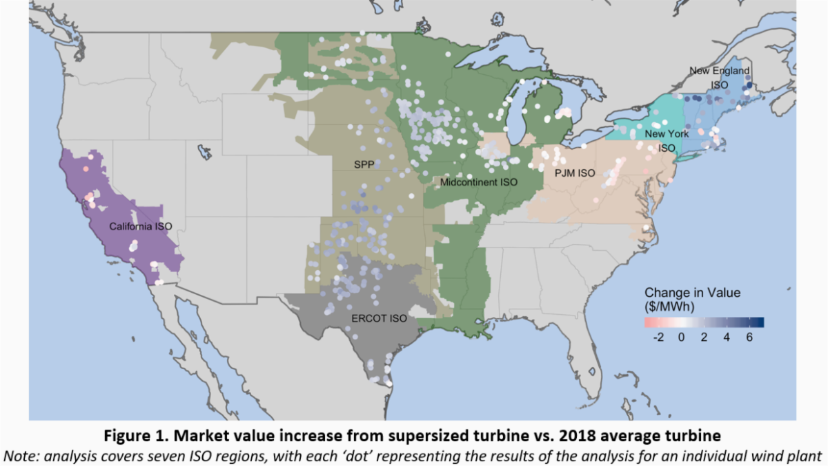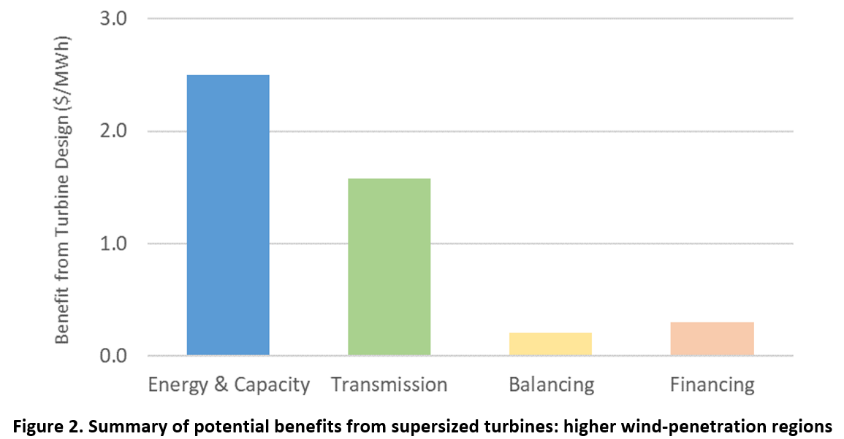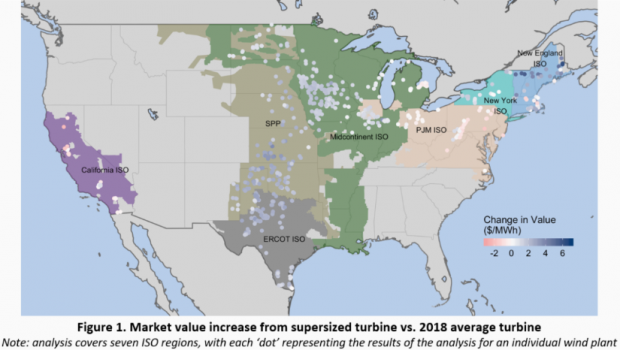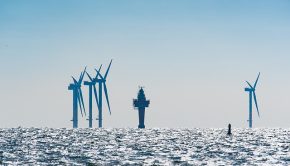Study: Supersized wind turbines could deliver $4-5/MWh more in grid benefits –
Study: Supersized wind turbines could deliver $4-5/MWh more in grid benefits –
A Berkeley Lab study, published in the journal
Wind Engineering, shows that supersized wind turbines can enhance the
value of wind energy to the electricity system and provide other ‘hidden’
benefits. These benefits are in addition to reduction in levelized costs and
illustrate the importance of expanding wind turbine design to focus on
direct-cost minimization and the impact that the value of wind has on the grid.
The significant increases in wind turbine size
recently have been driven by a goal of minimizing the levelized cost of wind
energy (LCOE). Previous research by Berkeley Lab suggests that even larger
‘supersized’ turbines might enable further LCOE reduction of $6/MWh. Other
research by DNV GL identified potential solutions to the logistical challenges
associated with deploying supersized turbines. But with wind’s LCOE now
comparable to other generating resources, other design considerations besides
cost-minimization have grown in importance. The newly released paper addresses
that expanded design need, analyzing the impact of large wind turbines on
grid-system value.
The study’s results show that larger rotors
(relative to nameplate capacity) and taller towers might not only reduce LCOE but
could also enhance the value of wind energy and provide other ‘hidden’
benefits. These benefits result from increased capacity factors that larger
rotors and taller towers enable, as well as supersized turbines, which tend to
spread wind output proportionately over more hours of the year.
This analysis leverages recent hourly wholesale pricing patterns and hourly wind profiles for wind plants located in the seven organized wholesale markets (i.e., ISOs) in the US. The study finds that in regions where wind penetration has reached around 20% (such as ERCOT and SPP), supersized turbines could already boost wholesale energy and capacity value by $2-3/MWh on average, compared to turbines deployed in the recent past (Figure 1). Across all ISO regions, the average value boost is $1-2/MWh; for specific plants, the value enhancement is already as much as $5/MWh.

These wholesale market value benefits are augmented by three additional possible advantages of up-scaled turbines: reduced transmission expenditure due to greater transmission utilization, lower balancing costs for the electricity system due to lower aggregate wind output variability and lower financing costs due to less long-term wind output uncertainty. The analysis finds that these three benefits amounts to $2/MWh (Figure 2), adding to the $2-3/MWh energy and capacity value boost seen in regions with higher wind penetrations (Figure 1).

Considering all benefits, the aggregate
benefit averages $4-5/MWh in higher wind-penetration areas. Moreover, these
possible benefits add to the $6/MWh of potential LCOE advantage of supersized
turbines assessed in earlier work, yielding total benefits of around $10/MWh.
The outcome of said benefits will be
determined by future wholesale price patterns, the success of continued design
and materials optimization, social acceptance and regulatory hurdles, and the
logistical constraints of transporting and erecting even-larger blades, towers
and nacelle components.
Wind energy has rapidly increased globally but
continued technical advancements will be necessary. This paper contributes to a
growing understanding of one pathway—further upscaling in turbine size—by
focusing on several less-recognized benefits of larger-rotor and taller-tower
land-based wind turbines. The analysis also illustrates the growing importance
of factors beyond plant-level costs in turbine and project design and
operations.
As wind penetrations increase, the output profile and characteristics of wind begin to impose challenges to the electric grid. By expanding the analysis scope to consider supplementary factors that influence the system economics of wind—market value, transmission, balancing, and financing—turbine designers, project developers and wind R&D experts can help ensure that wind plants of the future seek a balance between minimizing costs and maximizing value.
This work was funded by the U.S. Department of Energy’s Wind Energy Technologies Office.








